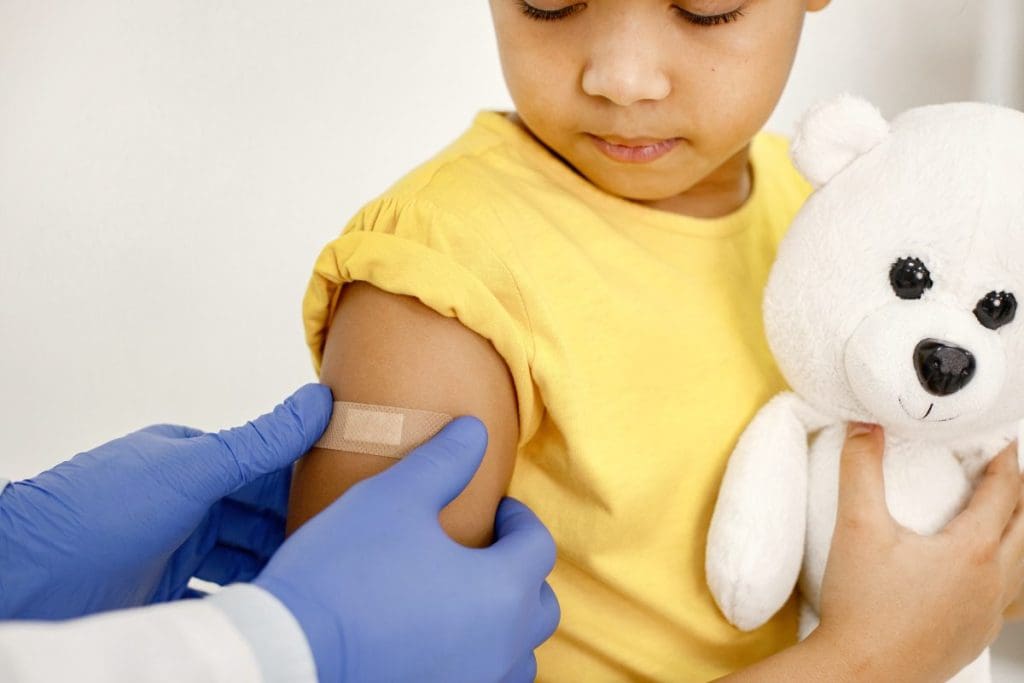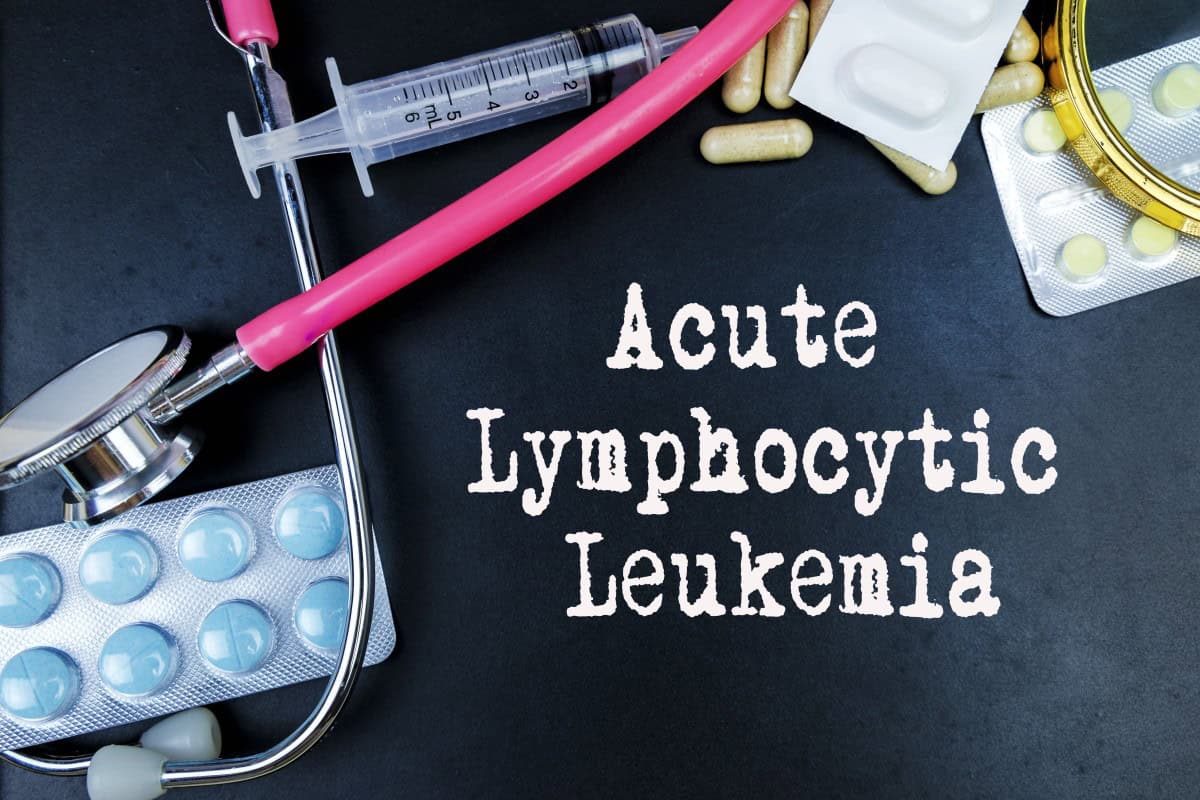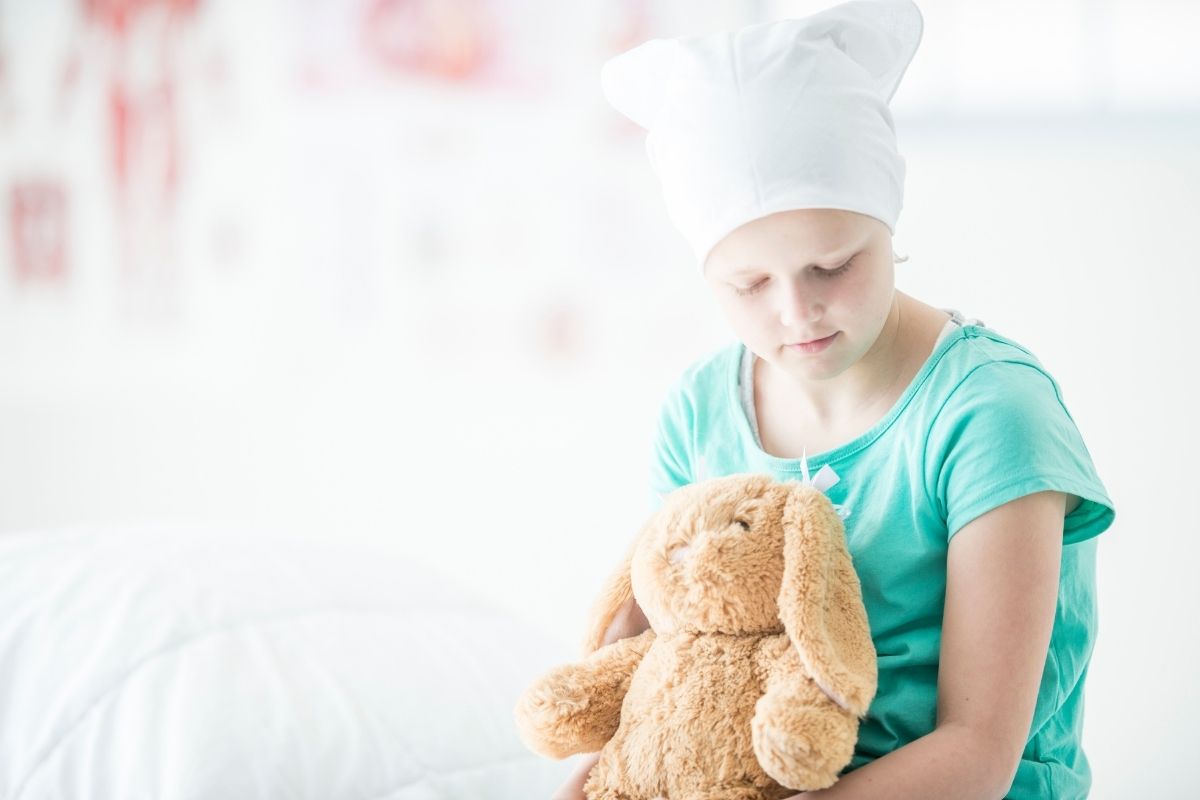Last Updated on November 13, 2025 by

When a child is diagnosed with leukemia, the whole family feels the impact. As a supportive community, we can make a big difference by offering emotional care, practical help, and connecting families with valuable resources.
Leukemia is the most common childhood cancer, with about 4.8 cases per 100,000 children every year. The 5-year survival rate for childhood acute lymphoblastic leukemia (ALL) is around 90%, while acute myeloid leukemia (AML) has a survival rate of about 65“70%.
It’s important to understand childhood leukemia, available treatments, and the ways it affects families. Support goes beyond medical care”it also includes helping children socially and emotionally. For example, parents often wonder how to handle sensitive situations like explaining their child’s illness at school. If you’re facing the challenge of a 5 year old with cancer what to tell classmates, it’s best to keep the explanation age-appropriate, simple, and reassuring.
We’ll explore how to provide complete support, from immediate help after diagnosis to long-term care strategies. This also includes practical tips on communication”such as what to tell classmates about a child with cancer”so that peers can be supportive and compassionate.
Understanding childhood leukemia is key for families going through this tough time. It’s a cancer that affects the blood and bone marrow. Here, the bone marrow makes bad white blood cells that push out good ones.

Leukemia is the top cancer in kids, making up 30% of all childhood cancers. It happens when the bone marrow makes bad white blood cells that can’t fight off infections well.
Acute Lymphoblastic Leukemia (ALL) is the most common, making up 80% of cases. It grows fast if not treated right away.
There are two main types of leukemia in kids: Acute Lymphoblastic Leukemia (ALL) and Acute Myeloid Leukemia (AML). ALL is more common and has a better survival rate, with a 5-year survival rate of about 90%. AML is less common but has a 5-year survival rate of 65-70%.
The treatment journey for childhood leukemia is complex. It includes many stages, from diagnosis to treatment and follow-up care. Families face many challenges, like the emotional impact of the diagnosis and the tough treatment process.
Treatment often involves chemotherapy and sometimes a bone marrow transplant. The journey is long and hard, needing a strong support system for the child and their family.
When a family finds out their child has leukemia, it changes everything. It brings a mix of strong emotions. The first shock and sadness hit hard, affecting everyone in the family.
The news of a leukemia diagnosis is very tough. Families struggle to accept it, feeling denial, anger, and sadness. One parent shared,
“The diagnosis was like a storm that hit us hard, leaving us breathless and unsure of what to do next.”
Having a support system is key during this time. Friends, family, and support groups can offer a lot of help. Professional counseling is also important for families to deal with their feelings.
Leukemia treatment is long and tough, bringing more emotional challenges. Managing the child’s care and daily life can put a strain on family bonds. Maintaining open communication is vital for coping.
It’s hard for families to balance the child’s needs with those of other kids.
Siblings of kids with leukemia feel many emotions, like jealousy and fear. It’s important to listen to their feelings and support them. Including siblings in the care process and keeping them informed helps them feel secure.
Understanding and meeting the emotional needs of all family members is key. This way, we can support families better during treatment.
Supporting families with a child who has leukemia means being there, listening, and being consistent. This helps the family feel supported and understood on their journey.
Being present means giving emotional support, practical help, and a listening ear without being too much. It’s about finding the right balance between being there and giving them space.
It’s important to follow the family’s lead in what they need from you. This means understanding their preferences, values, and priorities, and adjusting your support to fit their needs.
Being consistent and reliable is key to effective support. By being a steady presence, you help the family feel more secure and less alone.
Consistent support means regular check-ins, keeping promises, and being there over time. This can be as simple as weekly phone calls, regular visits, or help with ongoing tasks.
Reliability means being someone the family can count on for emotional support, practical help, or just a listening ear. Being reliable reduces their stress and anxiety, letting them focus on their child’s care.
Families facing a childhood leukemia diagnosis need quick and practical help. The first days after diagnosis are key. Getting support right away can help them deal with treatment.
Building a network of family, friends, and community is a good start. This network helps organize help, making sure the family gets what they need without feeling overwhelmed. Coordination systems, like online platforms or apps, are great for managing meal trains, household tasks, and visits.
“We were amazed by the outpouring of support after our child’s diagnosis. An online coordination system helped us manage the influx of offers and ensure we got the help we needed,” says a parent.
Meal trains are a great way to help families eat well during tough times. You can organize meals through online platforms that let people sign up to deliver meals. Also, helping with household chores like cleaning or laundry can really help lighten the load.
Visiting a child in the hospital can really lift their spirits. But it’s important to respect their space and follow their rules. Knowing their treatment schedule and condition is key to avoiding visiting when it’s not a good time.

As one mother shared, “Visitors who were considerate of our schedule and needs made a big difference. It was a comfort to know we weren’t alone.”
Helping families with childhood leukemia is key. The daily struggles are huge, from doctor visits to taking care of other kids and keeping the house clean.
Getting to and from doctor visits is hard for families. We can help by setting up carpooling or giving gas cards to ease the stress. Many groups also offer rides for families with cancer.
Looking after siblings when a child is in the hospital is tough. Offering to watch the other kids or finding childcare is a big help. It lets parents focus on their child’s treatment.
“Having someone trustworthy to care for our other children while we were at the hospital made all the difference. It was one less thing to worry about.”
A parent’s testimonial
Household chores can overwhelm families with a child’s cancer diagnosis. Helping with grocery shopping, cleaning, or lawn care can really help.
By giving practical help, we can really help families with childhood leukemia. Every little bit, from rides to household chores, makes a big difference.
When a child with cancer goes back to school, it’s key to tell their classmates about it. This helps them adjust smoothly and keeps their friendships strong.
Talking about cancer in a way a 5-year-old can understand is important. We should use simple words. For instance, we can say cancer is a sickness that affects the body’s cells. Treatment helps make the child better.
Key points to cover when explaining cancer to classmates include:
Keeping social ties strong is key to a child’s happiness during treatment. Encouraging classmates to visit or send messages makes the child feel included.
We can help by setting up visits or making cards and messages. Keeping the child in the loop about school events is also good.
Teachers and staff are very important in supporting a child with cancer. We should give them all the details about the child’s condition and needs.
Support strategies for teachers and school staff include:
Together, we can make a supportive place for the child to learn and make friends.
When a child gets cancer, talking to them and their family is key. Good communication builds trust and support. It helps them feel better during treatment.
Talking about cancer needs to be done with care and honesty. Use words the child can understand. Answer their questions truthfully and reassure them without ignoring their fears.
Explaining cancer in simple terms can comfort them. For example, saying it’s a disease that affects cells and that treatment will fight it. Listening to their worries and validating their feelings is also important.
Being honest helps keep things normal for the child and family. Open communication reduces anxiety. It’s about being honest about the situation but also giving hope.
Families value clear talks about treatment, side effects, and managing challenges. This openness helps them plan and prepare. It makes the journey less scary.
Parents of children with cancer face big challenges. Words of encouragement can help a lot. Simple gestures, like acknowledging their strength, can comfort them.
Being there, listening, and helping with tasks is supportive. Letting them know they’re not alone and their child is in good hands is uplifting. Saying “You’re doing a great job,” “I’m here for you,” or “Your child is loved and cared for” can reassure them.
When a child is diagnosed with cancer, it’s not just tough emotionally. It also puts a big financial strain on families. They face high costs for treatment, travel, and lost income. That’s why getting financial help is so important during this hard time.
Childhood cancer can hit families hard financially. The costs for treatment, like hospital stays and medicines, are high. Families also spend a lot on travel and staying away from home for doctor visits.
On top of that, not being able to work because of the illness adds to the financial stress. It’s a big challenge for families to handle.
It’s key to know how much financial help is out there. Families should look into the different resources that can help with these costs.
Dealing with insurance and medical bills can be really tough. Many groups help with insurance claims and bills. They make it easier to understand what’s covered and what’s not.
Getting help from experts can really ease the stress. They can help families get the most from their insurance and work on lowering medical bills.
There are many nonprofits that help families with childhood cancer financially. They offer direct aid, grants, and help with travel and staying away from home. This financial help lets families focus on their child’s health.
By using these financial support resources, families can handle the financial side of childhood cancer better. This lets them focus on caring for their child.
Supporting a friend with a child who has cancer from far away needs creativity. Even without being there, we can show we care in many ways.
Today, it’s easy to stay in touch with loved ones. We can use technology to offer emotional support and help. Video calls and messaging apps let us keep in touch and offer a listening ear.
Starting a private online group or using a shared calendar helps coordinate support. This digital connection keeps everyone informed and supports the family continuously.
Sending care packages or thoughtful gifts shows we care. We can tailor these to the family’s needs, like comfort items for the child or practical items for the home.
Think about what the family likes and needs when making care packages. Cozy blankets, books, or games for the child, and meal delivery gift cards or household essentials are great. Personal touches show we’re thinking of them.
We can help coordinate support for the family, even from far away. This might include organizing meal trains, arranging transportation to medical appointments, or being a contact for when they need help.
Using online platforms for care coordination makes things easier. These platforms help us work together, ensuring the family gets the support they need without duplication.
By using virtual support, sending thoughtful gifts, and coordinating care, we can greatly help families dealing with childhood cancer, even from a distance.
When a child is diagnosed with leukemia, families need more than just medical treatment. They need a full support system. We help connect these families to professional resources for care and help during their journey.
Families with childhood leukemia get a lot from multidisciplinary care networks and specialized treatment centers. These teams include doctors, nurses, and social workers working together. They provide all-around care.
Specialized treatment centers have the newest technology and treatments. This ensures kids get the best care possible.
Leukemia diagnosis affects the whole family deeply. Psychological support services are key for managing stress and anxiety. They offer counseling for kids, parents, and siblings.
Support groups let families share their experiences. They find comfort knowing they’re not alone.
Going back to school after leukemia treatment can be tough for kids. Educational resources and school reintegration programs are very important. They help create a supportive school environment.
These programs give teachers the tools to help the child. They also help the child fit back in socially.
By linking families to these resources, we make sure they get the support they need. This helps them face the challenges of childhood leukemia.
Families going through their child’s leukemia treatment need special support. The treatment changes a lot, from the start to the end. It’s not the same for every phase.
When a family first finds out about leukemia, they face big emotional and practical hurdles. Acute support needs are very important. This includes emotional support, help with daily tasks, and guidance through the healthcare system.
Being there for them, listening, and helping out with meals and chores can make a big difference. It’s important to listen to what the family needs and wants during this tough time. Coordination of support from family, friends, and community resources can help manage these challenges.
When treatment moves to the maintenance phase, the focus changes to long-term support strategies. This part of the treatment is less intense but needs ongoing help. Families need ongoing practical help and emotional support.
We can help by setting up a steady support network. This includes regular visits, meal trains, and help with household chores. Flexibility is important because family needs can change over time.
When a family reaches remission and starts recovering, they start to rebuild their lives. But they also need ongoing support, mainly for follow-up care and emotional healing.
Follow-up care means regular doctor visits and watching for any late effects of treatment. We can help by keeping track of appointments, understanding medical advice, and providing emotional support during this time.
By understanding and meeting the different needs in each treatment phase, we can offer full support to families dealing with childhood leukemia.
Supporting a family with a child who has leukemia is a big job. It needs a long-term plan and flexibility. We must help in different ways as treatment changes.
Understanding what the family needs is key. We can help a lot by giving practical help, emotional support, and financial aid. Studies show that about 80% of kids with cancer can live for 5 years or more.
It’s vital to support families with cancer for a long time. A strong support system helps them feel cared for from start to finish. This support is needed from the moment they find out about the cancer to after treatment.
Leukemia is a cancer that affects the blood and bone marrow. It’s the most common cancer in kids. Acute Lymphoblastic Leukemia (ALL) is the most common type.
Be there for the family and follow their lead on support. Offer practical help like meals, household chores, and rides to doctors’ visits.
Families deal with shock, grief, and anxiety. They also face ongoing challenges like managing the child’s condition and supporting siblings. The cost of treatment adds to their stress.
Help the child explain their condition to classmates. Make sure teachers and staff are informed and supportive. This helps the child stay connected with friends.
Families can get help with insurance, medical bills, and financial aid from nonprofits. These resources help with the cost of treatment.
Use virtual support, send care packages, and coordinate with others. This helps the family feel connected and supported.
Treatment phases include diagnosis, initial treatment, maintenance, and follow-up care. Understand the family’s needs in each phase. Offer practical and emotional support tailored to their needs.
Use simple language, be honest, and keep communication open. This helps the child understand and feel supported.
Families can find help from care networks, treatment centers, and psychological services. These resources provide support throughout treatment.
Subscribe to our e-newsletter to stay informed about the latest innovations in the world of health and exclusive offers!